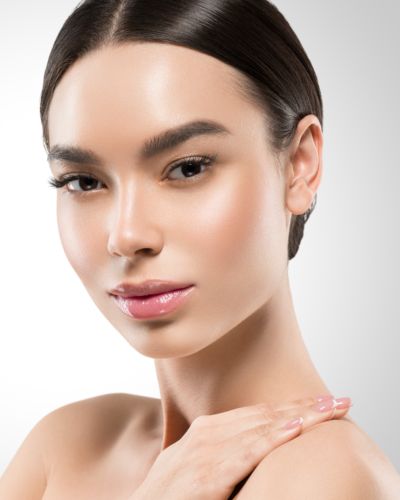Beyond Wrinkles: The Many Wonders of Botox Therapy

Botox is renowned for reducing wrinkles and fine lines, offering a youthful appearance. Derived from the botulinum toxin produced by Clostridium botulinum bacteria, Botox, in small doses, can be beneficial despite the risk of botulism. This treatment not only enhances skin but also aids in alleviating migraines and muscle spasms.
Understanding how Botox works and its numerous medical benefits is essential. It’s crucial to be aware of its effectiveness and potential risks, providing you with the necessary information to make informed decisions about treatment options. Whether you’re interested in Botox for its cosmetic or health benefits, knowing its advantages beyond wrinkle reduction is invaluable.
For those seeking professional Botox services, Total Anti-Aging and Wellness is a premier choice. Renowned for their expertise and commitment to customer satisfaction, they ensure you receive top-notch care and results.
Key Highlights
- Botox is made from a toxin called botulinum. It’s used to make muscles temporarily stop moving and can be used for beauty reasons or health problems.
- For things like getting rid of wrinkles, stopping eyelid spasms, easing migraines, and helping with an overactive bladder, people turn to it often.
- By stopping the nerves that tell muscles to tighten up, botox makes these muscles relax for a while. This helps reduce stiffness too.
- Besides making you look younger by smoothing out wrinkles, the FDA has said yes to using botox for serious headaches and muscle twitches.
- When it comes to dealing with excessive sweating or twitchy muscles, botox has proven itself time and again by offering comfort and bettering lives.
- -With all its benefits, though, come some risks. Talking about how much it costs or what your insurance will help pay for is something you should do with someone who knows healthcare inside out.
Exploring the Multifaceted Benefits of Botox
Botox is pretty famous for making wrinkles and fine lines less noticeable. As time goes by, our skin isn’t as stretchy anymore, which causes these wrinkles and fine lines to show up. Botox aims at the facial muscles that are mainly responsible for these kinds of marks on our face, like those forehead lines or crow’s feet around the eyes.
By putting a little bit of botulinum toxin into these specific muscles, Botox helps them relax, ultimately diminishing the appearance of wrinkles and fine lines. This makes your skin look smoother and gives you a younger-looking vibe. People feel more confident and refreshed because it really cuts down on aging signs. If someone keeps getting Botox injections regularly, they can keep their skin looking smooth and young for many months at a time, making it a highly effective cosmetic procedure for diminishing wrinkles and fine lines.

The Science Behind Botox and How It Works
To understand how Botox works, let’s start with how muscles move. Nerve endings release acetylcholine to make muscles contract. Botox, or Botulinum toxin, stops acetylcholine release. This prevents muscle contraction, putting them on a temporary freeze mode.
This relaxation effect helps ease tightness and benefits various health issues like muscle spasms and headaches by blocking nerve signals that tell muscles to move. Botox interrupts normal nerve-muscle communication, giving muscles a break. It’s not just for appearance but also treats conditions like an overactive bladder and muscle stiffness effectively. In terms of appearance, Botox injections are commonly used to relax facial muscles that cause frown lines and other wrinkles, making it a popular choice for those looking to improve their appearance.
Botox Beyond Beauty: Therapeutic Uses You Didn't Know About
Most people think of Botox as just a way to get rid of wrinkles, but it’s much more than that. The FDA has given the thumbs up for Botox to be used in treating several health issues because it can relax muscles for a bit. This makes it really useful for different medical problems. For instance:
- With an overactive bladder, putting some Botox into the bladder helps folks control their pee better and deal with urinary incontinence.
- If someone suffers from chronic migraines, using Botox could help cut down how often they happen and make them less severe.
- And when it comes to muscle spasms or stiffness from things like cervical dystonia or spasticity, injections of Botoz can offer relief.
Beyond these uses, researchers are looking at whether botox might help with other stuff too – like excessive sweating under your arms or twitchy eyelids and even certain conditions that affect how you move. So yeah, Botix is not just about looking good; its potential to ease various medical conditions keeps growing, giving hope to many who struggle with these challenges
Botox for Chronic Migraines: A Surprising Relief
For folks dealing with chronic migraines, getting Botox might be a game-changer. This method uses botulinum toxin injections in certain spots to help cut down on how often and how bad the headaches are. By focusing on nerve endings, Botox stops the pain messages that come with migraines. This can be a big help for people who haven’t had much luck with other treatments. Those who try out this new way of tackling migraine symptoms could see their situation get better and enjoy life more thanks to these shots.
Understanding How Botox Alleviates Migraine Symptoms
Botox therapy for fighting migraines means doctors use a special kind of toxin, called botulinum toxin, and they inject it into certain muscles in your head and neck. This stops the nerves that feel pain from working too much. Because of this, your muscles don’t get as stiff, and you don’t feel pain as strongly, which helps take away migraine headaches.
When getting botox treatment, you’ll have to go through several shots around your head and neck because these spots are usually where migraines start. By calming down those overly busy nerve endings and stopping specific chemicals from causing trouble, botox can really help lessen the symptoms of a migraine, including neck pain.
What Patients Can Expect During Migraine Treatment with Botox
Thinking about using Botox to help with your chronic migraines? Here’s what you should know. When it comes to getting Botox injections for migraine relief, a skilled doctor like a neurologist or dermatologist will do the job. They use a tiny needle that most people handle pretty well. How many shots you get and where they put them depends on how your migraines happen for you personally.
The whole thing is quick, taking around 15 minutes, and after that, you can go back to doing whatever you were doing before without any downtime. It’s really important to talk over both the good points and possible risks of this botox treatment with your doctor and make sure they know all about your health situation so everything goes as smoothly as possible.

Combatting Hyperhidrosis: Botox as a Solution for Excessive Sweating
For folks dealing with too much sweating, or hyperhidrosis, Botox therapy has turned out to be a real game-changer. By focusing on the sweat glands, it stops that specific chemical from making you sweat so much. This method of treatment has really made a difference for many people by cutting down on unwanted sweating and giving them some comfort.
When doctors give these Botox shots in places like underarms, hands, or feet where sweating is too much, they do it carefully so everything else in your body keeps working just fine. So for anyone trying to find a way to handle their excessive sweating issues better, considering Botoxy as a treatment option might just be the right move.
The Effectiveness of Botox in Treating Hyperhidrosis
Botox treatment has proven to be really good at helping people who sweat too much. This involves giving shots in places like underarms, hands, or feet where there’s a lot of sweating. Botox does its magic by stopping the messages that go from nerves to sweat glands, which means less sweat is made in those spots.
The cool part? The effects of this botox therapy can stick around for quite a few months, offering folks a break from their sweating issues for a good while. A bunch of people who’ve tried botox for excessive sweating have said it’s made their lives way better because they don’t have to stress about sweating so much and how it affects hanging out with others or feeling embarrassed.
Botox for Muscle Spasms and Movement Disorders
When doctors use Botox to help with muscle spasms and problems moving, they’re really putting a special kind of toxin called botulinum toxin into certain spots. This helps relax the muscles by stopping signals from the nerves that make them tight or move oddly.
It’s especially good for issues like twitching eyelids and strabismus, which is when eyes don’t line up right. After getting this treatment, many people feel less pain and find it easier to control their muscles. The FDA has said it’s okay to use Botox for these health reasons, showing it can really make life better for folks dealing with these challenges.
The Role of Botox in Managing Muscle Spasticity
Muscle spasticity makes muscles stiff and causes them to contract on their own, which can be tough to deal with. Botox is a good treatment option for people facing this issue. By injecting it straight into the muscles that are causing trouble, Botox stops a chemical called acetylcholine from telling the muscles to contract.
This action helps relax the muscles and cuts down on how often and how hard they spasm. Going through botox treatment can make moving around easier, lessen pain, and improve life quality for those dealing with muscle stiffness due to spasticity. It’s key to team up with a healthcare provider who knows all about using botox for treating muscle spasticity so you can figure out what will work best for you.
Personal Stories: How Botox Changed Lives in Movement Disorder Treatment
Hearing from people who’ve had Botox for problems with moving around can really open your eyes to how much it helps. A lot of them say they’re doing way better, feeling less pain, and just enjoying life more.
Before getting Botox, some folks had a tough time with stiff muscles and couldn’t do much without struggling. But after the treatment, things changed big time. They could finally take part in fun stuff that wasn’t possible before. These stories are pretty inspiring if you’re thinking about this treatment option as a way to deal with movement issues caused by botox therapy.
Why Botox is More Than Just a Cosmetic Treatment
Most people think of Botox as a way to make wrinkles less noticeable, but it’s not just for looks. The FDA has given the thumbs up for using Botox in treating several health issues, showing that its benefits aren’t only skin deep.
For folks dealing with eyelid spasms or blepharospasm, getting shots of Botox can really help. These injections calm down the muscles causing the spasms and give much-needed relief. On top of that, if you sweat more than usual—a condition called hyperhidrosis—Botox could be your go-to solution. It works by stopping the nerves from telling your sweat glands to go into overdrive, which means less discomfort and embarrassment from sweating too much.
When it comes to paying for these treatments through health insurance, things can get a bit tricky. While some plans might cover Botox when it’s used for medical reasons approved by doctors, others may not offer any coverage at all. So before going ahead with therapy involving botox, it is important to check your insurance coverage to see if it is covered and to what extent. This can help you save money and make the most out of your Botox treatments, which can be used for both aesthetic and therapeutic purposes.
What to Expect Before, During, and After Your Botox Session
Before getting botox, consult with a knowledgeable healthcare provider to discuss your goals and concerns. During the treatment, they will prepare your skin, apply numbing cream, and inject botox with a thin needle.
The process is quick and relatively comfortable. Afterward, you can resume normal activities but avoid touching the injection sites for 12 hours, lying down for a few hours, intense workouts, or hot environments for at least 24 hours. It is important to inform your healthcare provider if you are taking any blood thinners, as you may need to stop taking them several days before your injection to reduce the risk of bleeding or bruising.
The Botox Treatment Experience
Getting Botox is simple. A healthcare expert will discuss your goals and create a treatment plan. Botox is injected with a thin needle into targeted areas, causing minimal discomfort. After the procedure, you can resume normal activities but avoid rubbing the injection site for 12 hours and staying upright for a few hours. Side effects like pain, swelling, or bruising are temporary. Healing typically takes 10-14 days for visible results.

What to Expect Before, During, and After Your Botox Session
Before getting botox, consult with a knowledgeable healthcare provider to discuss your goals and concerns. During the treatment, they will prepare your skin, apply numbing cream, and inject botox with a thin needle. The process is quick and relatively comfortable.
Afterward, you can resume normal activities but avoid touching the injection sites for 12 hours, lying down for a few hours, intense workouts, or hot environments for at least 24 hours. It is important to inform your healthcare provider if you are taking any blood thinners, as you may need to stop taking them several days before your injection to reduce the risk of bleeding or bruising.
When to Consider Botox: Scenarios and Recommendations
Botox is commonly used for cosmetic and health purposes. It’s crucial to understand your goals and seek advice from healthcare professionals before getting Botox. It can help reduce frown lines, crow’s feet, and forehead wrinkles for a more youthful appearance. In terms of health, Botox may be recommended for migraines, overactive bladder, eyelid spasms, or excessive sweating. Consulting a knowledgeable healthcare provider is essential for personalized recommendations, especially when considering Botox for therapeutic treatment of medical conditions such as severe frown lines.
Botox for Aesthetic Enhancement: Is it Right for You?
Botox has really caught on for folks wanting to look a bit better. If getting rid of fine lines and wrinkles is what you’re after, Botox could be the way to go.
With botox cosmetic injections, they aim right at those muscles that cause wrinkles and fine lines, making them relax for a while. This smooths out your skin and makes you look younger.
Before jumping into it, though, it’s smart to talk with someone who knows their stuff in healthcare. They’ll take a good look at what you need specifically by considering how healthy you are overall, any medical history worth noting, and what you want to achieve aesthetically before suggesting if Botox or another prescription medicine treatment option might work best for you.

The Versatility of Botox Therapy: Evaluating its Impact on Quality of Life
Botox offers more than aesthetic improvements. It can reduce wrinkles, alleviate headaches, and manage an overactive bladder. Consult a doctor to see if Botox is right for you. Real-life testimonials show how Botox can enhance both appearance and emotional well-being, improving quality of life.
Conclusion
To wrap things up, Botox does a lot more than just smooth out wrinkles. It’s got a bunch of uses that can really help people out, like easing chronic migraines and excessive sweating or helping with muscle spasms and movement issues. By getting to know how Botox works and what it can do for different problems, folks can make better choices about using it. Whether you’re looking to look younger or get some relief from medical conditions, the many benefits of Botox could seriously improve your life. Talking with professionals is a smart move if you want to see how Botox might be right for you and tackle your particular concerns.
Ready for a Transformation?
Let our expert team help guide your anti-aging and wellness journey.
Schedule a free consultation to discuss your goals and how we can achieve them together.
Schedule a consultation
"*" indicates required fields
*By submitting this form you agree to be contacted via phone/text/email. Reply ‘STOP’ to opt-out.
Frequently Asked Questions
How Often Should I Get Botox Treatments for Continuous Benefits?
For keeping up the good effects of botox, how often you need it can vary based on your own situation and what you're hoping to achieve. It's really important to talk with a healthcare expert who can look into your unique needs. During a chat with them, they'll be able to suggest just the right number of treatments for you.
Is Botox treatment good?
Botox treatment offers a lot of benefits for people looking to enhance their looks and find relief from some health issues. It's quite popular for smoothing out wrinkles, making it a go-to cosmetic solution. Besides its beauty perks, Botox is also effective in managing medical problems like chronic migraines and an overactive bladder. Generally speaking, folks who undergo Botox treatments tend to be really happy with the results they get.
What are the cons of using Botox?
Botox treatments are generally safe if administered correctly. However, there are potential downsides and risks to consider. Side effects may include pain, swelling, bruises at the injection site, temporary eyelid drooping, or muscle issues near the injection area. It's essential to consult with a knowledgeable healthcare professional before undergoing Botox treatment to address any concerns and prioritize your health.
